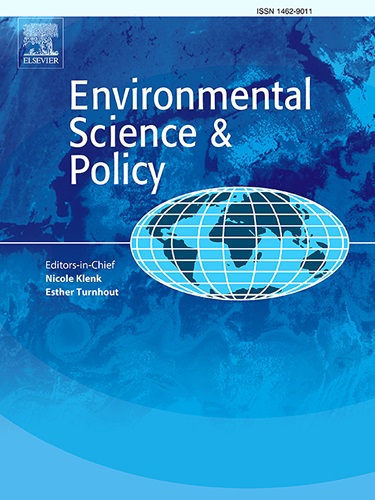测试农业公民科学项目持续参与的四种设计干预措施
IF 4.9
2区 环境科学与生态学
Q1 ENVIRONMENTAL SCIENCES
引用次数: 0
摘要
公民科学已经成为一种协作模式,它让非专业科学家参与科学研究,利用他们的贡献来实现大规模数据收集和促进社区参与。尽管取得了成功,但留住参与者仍然是一个严峻的挑战。利用Octalysis框架,本研究考察了四种干预策略——创建在线“社区”、“游戏化”、强调“个人贡献”的重要性和“社会反馈”——对持续参与农业公民科学项目的有效性。数据分析显示,与对照组相比,“社区”、“游戏化”和“个人贡献”显著提高了整体参与度,降低了辍学率。此外,由于协作支持,“社区”在具有挑战性的开花阶段表现出特别高的保留率。回归分析强调了年龄对干预效果的影响,年轻参与者(18 - 34岁)对“游戏化”反应最积极,而中年参与者(46 - 55岁)对“社会反馈”反应非常消极,老年参与者(65岁 +)从所有干预措施中获益。这些发现表明,量身定制的干预策略可以增强公民科学项目的长期参与。通过有针对性的设计干预来解决内在和外在动机,项目领导者可以提高参与者的留存率,确保公民科学计划的可持续性和成功。本研究为优化不同项目阶段和人口群体的参与策略提供了实用建议,为未来的公民科学项目提供了有价值的见解。本文章由计算机程序翻译,如有差异,请以英文原文为准。
Testing four design interventions for sustained participation in an agricultural citizen science project
Citizen science has emerged as a collaborative model that engages non-professional scientists in scientific research, leveraging their contributions to achieve large-scale data collection and fostering community engagement. Despite its successes, participant retention remains a critical challenge. Drawing upon the Octalysis Framework, this study examines the effectiveness of four intervention strategies—creation of an online ‘Community’, ‘Gamification’, highlighting the importance of ‘Individual Contribution’, and ‘Social feedback’—on sustained participation in an agricultural citizen science project. Data analysis revealed that ‘Community’, ‘Gamification’ and ‘Individual contribution’ significantly improved overall participation and reduced drop-out rates compared to the control group. Moreover, ‘Community’ demonstrated a particularly high retention rate during the challenging flowering stage, attributed to collaborative support. Regression analysis highlighted the influence of age on intervention effectiveness, with younger participants (18−34) responding most positively to ‘Gamification’, while middle-aged (46−55) participants responded very negatively to ‘Social feedback’, and senior participants (65 +) positively benefited from all interventions. These findings suggest that tailored intervention strategies can enhance long-term engagement in citizen science projects. By addressing both intrinsic and extrinsic motivations through targeted design interventions, project leaders can improve participant retention, ensuring the sustainability and success of citizen science initiatives. This study provides practical recommendations for optimizing engagement strategies across different project stages and demographic groups, offering valuable insights for future citizen science projects.
求助全文
通过发布文献求助,成功后即可免费获取论文全文。
去求助
来源期刊

Environmental Science & Policy
环境科学-环境科学
CiteScore
10.90
自引率
8.30%
发文量
332
审稿时长
68 days
期刊介绍:
Environmental Science & Policy promotes communication among government, business and industry, academia, and non-governmental organisations who are instrumental in the solution of environmental problems. It also seeks to advance interdisciplinary research of policy relevance on environmental issues such as climate change, biodiversity, environmental pollution and wastes, renewable and non-renewable natural resources, sustainability, and the interactions among these issues. The journal emphasises the linkages between these environmental issues and social and economic issues such as production, transport, consumption, growth, demographic changes, well-being, and health. However, the subject coverage will not be restricted to these issues and the introduction of new dimensions will be encouraged.
 求助内容:
求助内容: 应助结果提醒方式:
应助结果提醒方式:


